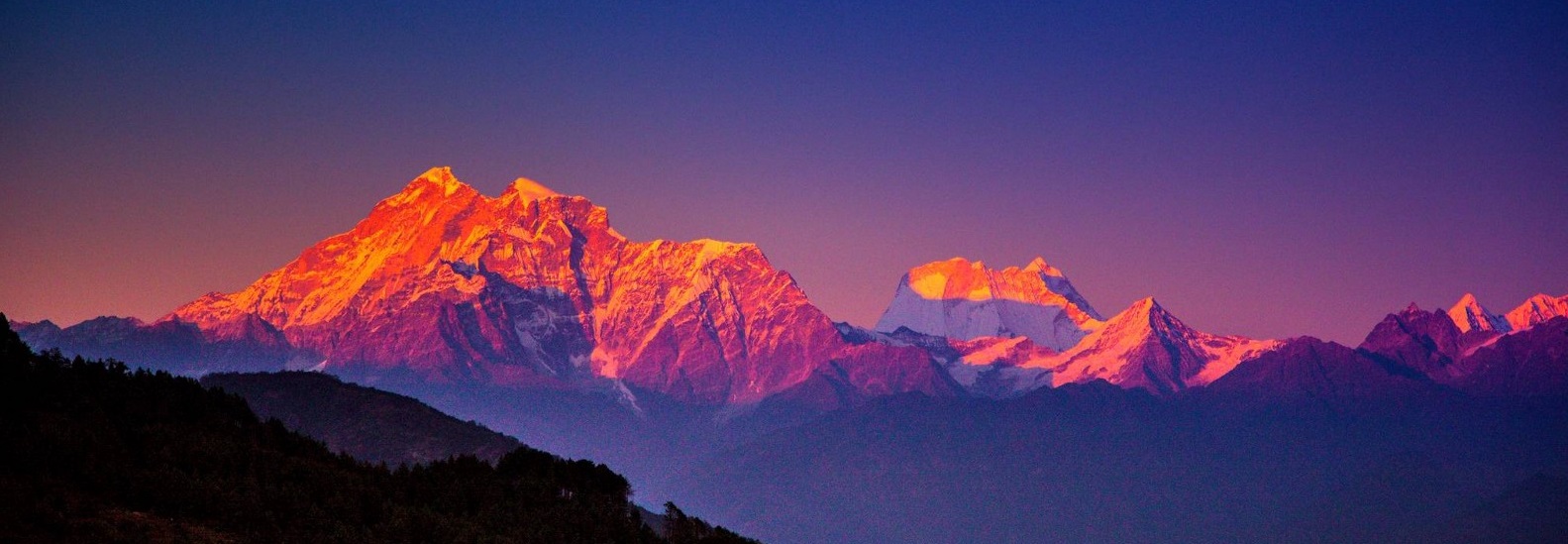
Celebrating Himalayas
Extending over 3,500 km from Afghanistan in the west to Myanmar in the east and enveloping all or part of eight countries along the stretch, the Himalayas have been adorned with epithets like – “Home of the Eight-Thousanders,” “Abode of Snow,” “Water Towers of Asia,” and most aptly so. Even today, the Himalayas continue to grow at a rate of 2cm per year, moving towards Central Asia. This geologically active mountain range continues to inspire awe and mystery to its existence.
The youngest fold mountain range, is home to the 14 mountains that are more than 8,000 meters in height above sea level. The Hindu Kush Himalayas, also called The Third Pole, is known for holding more of the earth’s snow and ice than anywhere else beyond the poles. It is an essential part of the cryosphere which feeds Asia’s 10 major river systems in India, Pakistan, China, Nepal, Bhutan, Bangladesh, Burma, Thailand, Laos, Cambodia and Vietnam.
Natural selection in the region has given rise to diverse mountain ecosystems with its distinct and vulnerable biodiversity. Parts of the region or entire areas have been labelled as under the four Biodiversity Hotspots – the Mountains of Central Asia, the Himalayas, Indo-Burma, and Mountains of South-West China. The Hindu Kush Himalayas harbor more than 35,000+ plant species and 200+ species of animals. Remarkably, from 1998 to 2008, in just a span of ten years, a total of 353 new species from the Eastern Himalayas were discovered, which includes – 242 plants, 16 amphibians, 16 reptiles, 14 fish, two birds, two mammals and 61 invertebrates.
Life in this enchanting snow clad natural wonder have also culminated into a rich and diverse culture and tradition across the region. From years of living in harmony with their natural surrounding, over 1000 ethic communities have flourished from the resources flowing from the Himalayas, each with their distinct traditional indigenous knowledge.
However, with the consequences of climate change becoming more stark with each passing year and the ever increasing anthropogenic pressure, destruction looms over the functioning ecosystem of the geological marvel, jeopardizing its services and threatening its biodiversity. The Himalayas are being subjected to tremendous stress by the global drivers of biodiversity: Land use pattern, direct exploitation of biodiversity, climate change, pollution and invasive alien species. Consequently, the impacts have induced negative changes in wildlife population, plant phenology and productivity of the ecosystem.
The 10th CMS VATAVARAN - India’s only International Environment & Wildlife Film Festival and Forum, attempts to focus on this beautiful and endangered ecosystem. On the theme - “Celebrating Himalayas,” CMS VATAVARAN through the medium of films and forums, strives to change the perception, practice, policy and governance, that will have a positive impact on the state of environment in the Himalayas. Through this festival, it wishes to remind people that their survival depends on healthy ecosystems, and the health of the Himalayan ecosystem is determined by the state of biodiversity, and biodiversity is essential for humans to survive.
CMS VATAVARAN’s initiative will also consolidate the international commitment towards the Global Goals, especially SDG 15: “Protect, restore and promote sustainable use of terrestrial ecosystems, sustainably manage forests, combat desertification, and halt and reverse land degradation and halt biodiversity loss.” Sustaining the Himalayas and its flow of ecosystem services will further result in elevating poverty of the Himalayan communities (SDG 1), food security (SDG 2), good health and wellbeing (SDG 3), clean water and sanitation (SDG 6), affordable and clean energy (SDG 7), reduced inequalities (SDG 10), mitigating impacts of climate crisis (SDG 13), and also recharging the Himalayan rivers that sustain a rich aquatic biodiversity (SDG 14).
Our Partners

